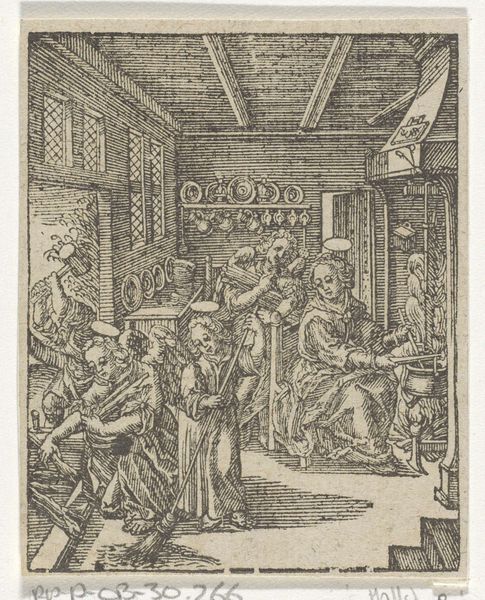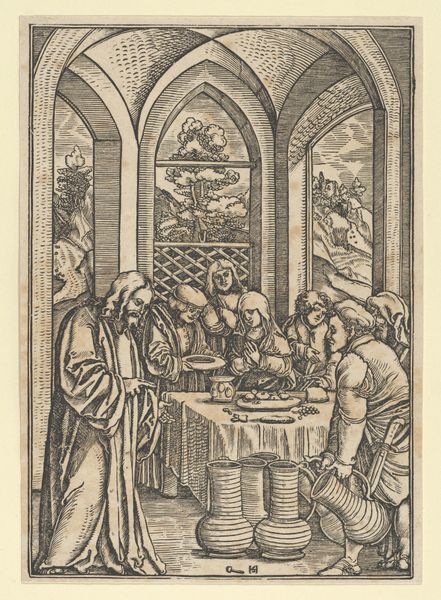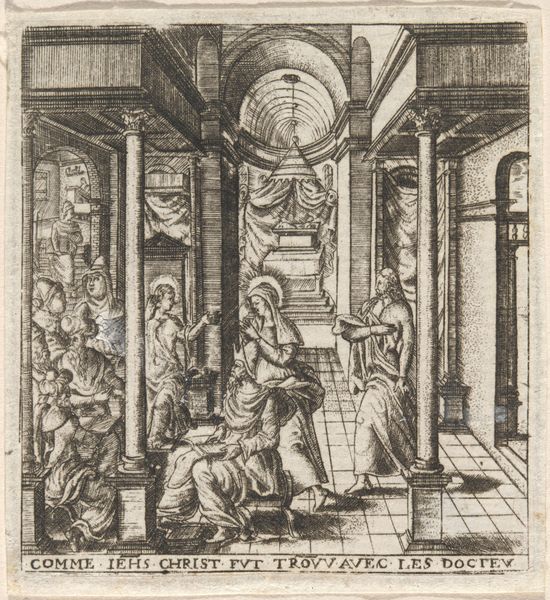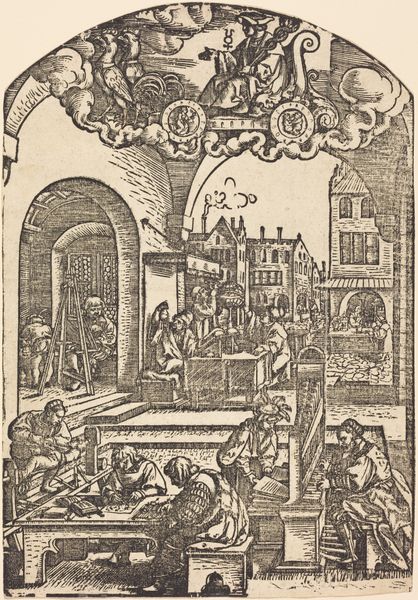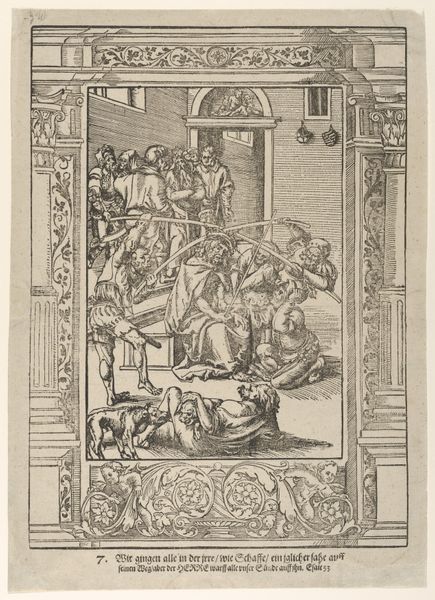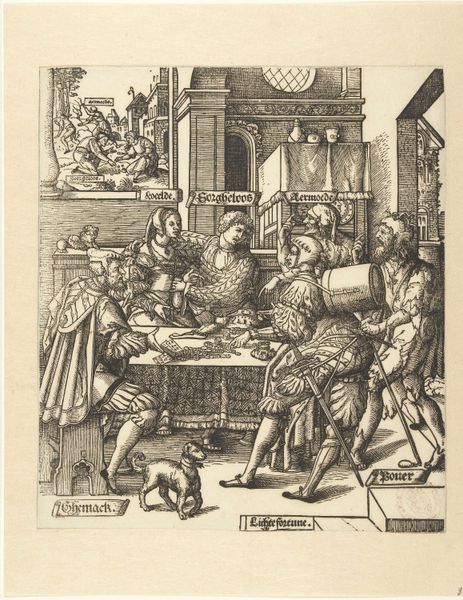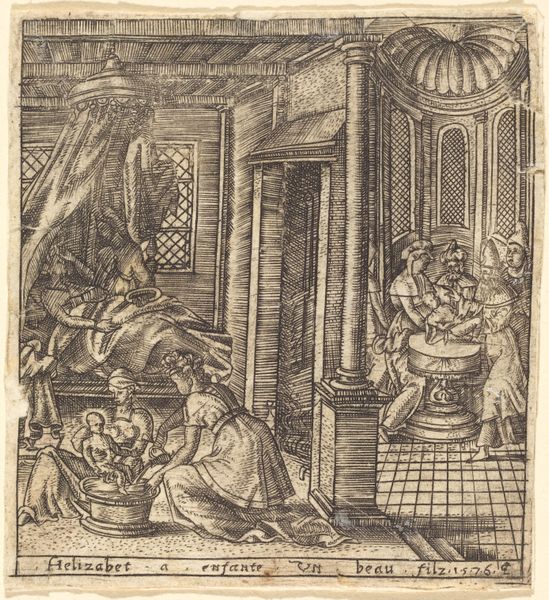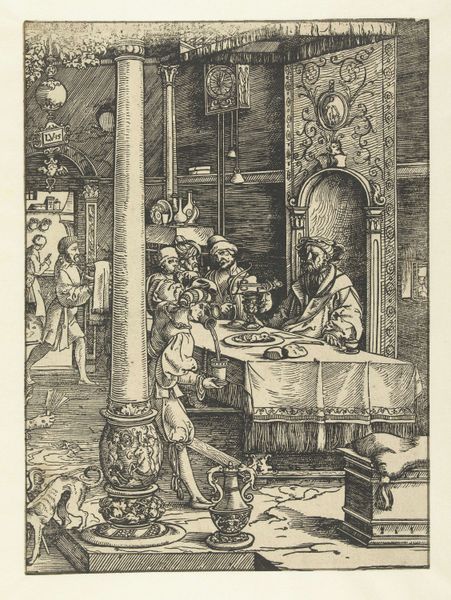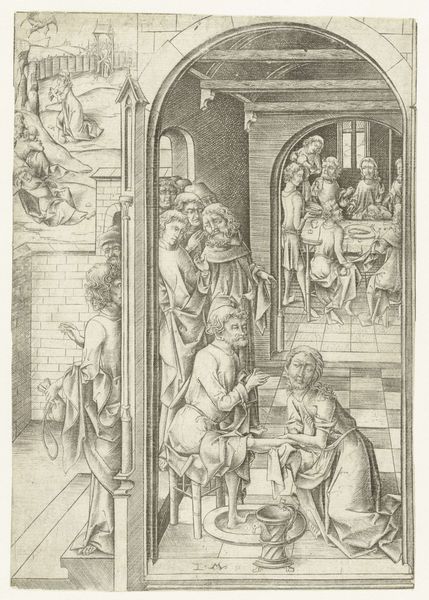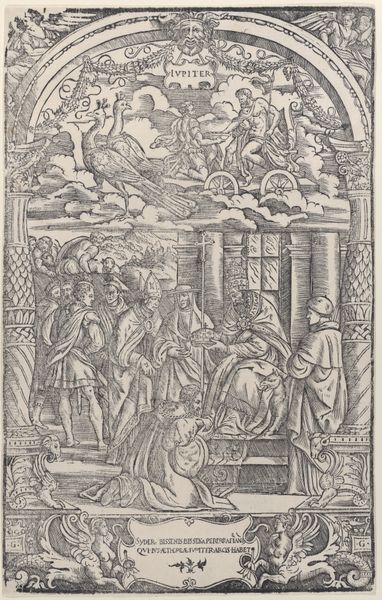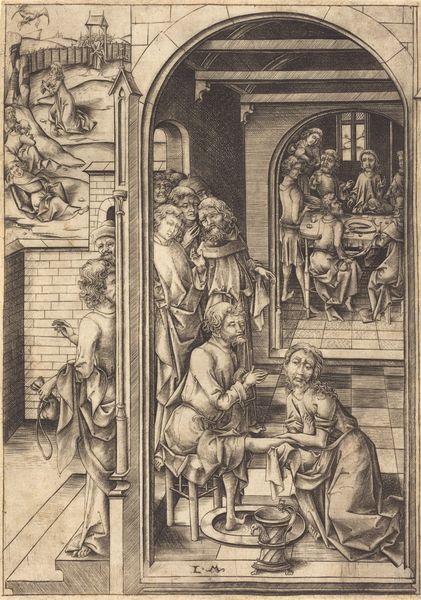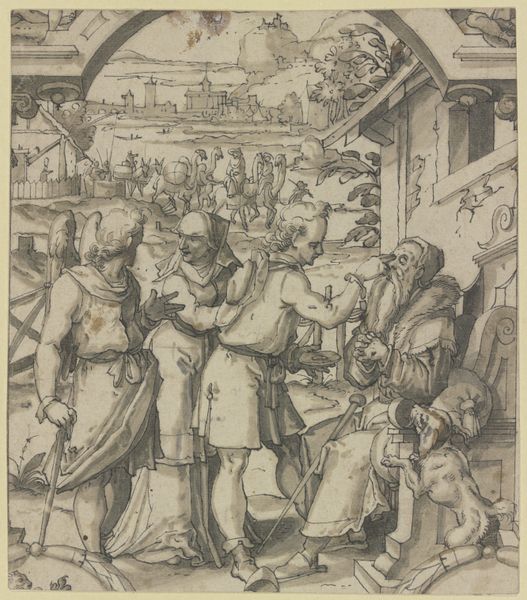
print, engraving
#
pen drawing
# print
#
figuration
#
11_renaissance
#
line
#
history-painting
#
northern-renaissance
#
engraving
Dimensions: height 365 mm, width 226 mm
Copyright: Rijks Museum: Open Domain
Curator: What a fascinating engraving. This is "Mercurius en zijn planeetkinderen," made in 1531, here at the Rijksmuseum. It’s attributed to an anonymous artist, and created with pen and ink. Editor: The first thing that strikes me is the detail. It's a small print, but so densely populated with figures and symbols. The overall feeling is one of focused industry, yet the floating figure above brings an element of otherworldly influence. Curator: Absolutely. Mercury, as a symbol, represented skill and ingenuity during the Renaissance, particularly within mercantile endeavors. Prints like these were intended to visually encapsulate complex astrological principles. Notice the figures in workshops—tailors, scribes, merchants; it reflects a very specific cultural preoccupation with craftsmanship as both a trade and an ideology. Editor: And how that idea of Mercury, god of messages, commerce and thieves, floats ethereally over it all! See the wheeling Zodiac figures—are those also representing crafts? And the inclusion of what looks like owls? They reinforce a kind of nocturnal pursuit of knowledge…or secrets? It adds another layer. It is like two worlds pressed into the same plane. Curator: Indeed! Remember that printmaking at the time was also booming commercially. It provided artists with autonomy outside traditional patronage systems, like church or court. So here, the engraving technique itself serves as the mechanical hand that makes possible widespread communication of astrological and social ideology to a broad audience. That act mirrors the very function Mercury represents. Editor: Very clever indeed. Though considering the meticulous, handcrafted approach required, perhaps this particular image also implies there remains a need for true artisans. Is this a snapshot of the era grappling with progress and what is lost in this process? Curator: Possibly. Images like this can tell us so much about Renaissance social structures and how visual messaging became democratized and served as both a recorder and facilitator of ideology. Editor: A confluence of so many narratives locked into a small print. I'll need another look.
Comments
No comments
Be the first to comment and join the conversation on the ultimate creative platform.

